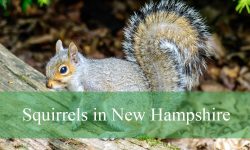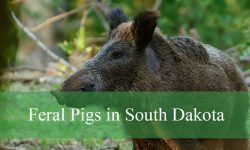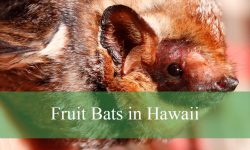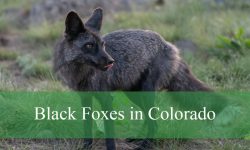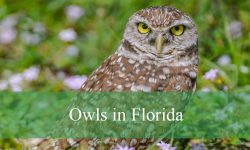When most people picture wild turkeys in the United States, they imagine the classic chestnut-brown males strutting proudly along forest edges, their feathers glinting bronze in the morning sun. Yet hidden among these familiar flocks in Wisconsin is a rare and fascinating anomaly — the white turkey.
These birds, gleaming like snow against the earthy tones of the woods, seem almost ghostlike in appearance. Their striking plumage captures attention instantly, but their origins and survival in the wild remain shrouded in mystery.
In this article, we’ll uncover the secrets behind Wisconsin’s white turkeys — exploring their genetics, behavior, sightings, and legal status, along with their ecological and conservation significance. Whether you’re a hunter, a nature enthusiast, or simply curious about rare wildlife, this deep dive will reveal why these pale birds continue to intrigue and inspire all who encounter them.
What Does “White Turkey” Really Mean?

Variations of whiteness — leucism, albinism, and white plumage
When you spot a turkey that appears white in Wisconsin, it doesn’t always mean the same thing genetically. There are several mechanisms by which a turkey might appear pale or white:
- Albinism: A genetic condition resulting in a complete lack of pigment in feathers, skin and eyes; albinistic turkeys would have pink or very pale eyes and skin. Reports indicate true albino wild turkeys are extremely rare — perhaps “one in 100,000” in some estimates.
- Leucism: A partial loss of pigmentation that can result in white, pale or patchy feathers but with normal eye color. Some of the white turkeys in Wisconsin may fall under this category.
- Genetic white strains or domestic intergrades: In some cases, birds may carry genes for white plumage (often derived from domestic turkey breeds) and when introduced or mixed with wild populations, can produce mostly white individuals.
Why these birds are so rare
White‐plumaged wild turkeys are rare for several reasons:
- Survival disadvantage: Being white may make the bird more visible to predators, or less camouflaged in its natural habitat of woods and fields.
- Genetic rarity: The mutations that cause albinism or leucism are uncommon, and unless passed on, they remain one‐offs.
- Selective pressures: Natural selection tends to favour the typical brown/bronze pattern that offers camouflage and social signalling; a white bird may stand out socially. In Wisconsin, one observer noted that while “smoke gray” wild turkeys might occur at roughly one in a hundred, true white ones (or extremely pale) are far less frequent.
How to identify a white turkey in the wild
If you’re aiming to spot one of these rare birds in Wisconsin, here are identification tips:
- Look for a turkey with mostly or entirely white plumage, but check the eyes: if the eyes are dark/normal colour, the bird is likely leucistic rather than albino.
- Note behaviour: Is it moving with other wild turkeys, or isolated? Some white turkeys have been seen mixing with typical birds.
- Location: Many reports come from backyard sightings or near woodland‐edge habitats where wild turkeys roam in Wisconsin.
- Picture & document: Such sightings are rare enough that if you find one, a photo is helpful for records and sharing with local birding or wildlife communities.
White Turkeys in Wisconsin — Sightings & Local Stories
Notable sightings around Wisconsin
One of the most well-documented cases took place in the town of Howard, Wisconsin, where a homeowner captured photographs of a rare white turkey mingling with a local flock. The bird’s bright plumage made it stand out dramatically against its surroundings, drawing the attention and admiration of neighbors and wildlife enthusiasts alike.
Another sighting occurred in Little Suamico, Wisconsin, when residents spotted a white turkey wandering near a backyard. The unusual appearance quickly sparked excitement on social media, as people shared photos and marveled at the rare visitor.
These local stories emphasize just how extraordinary such occurrences are. Even in regions where wild turkeys are plentiful, a white individual never fails to capture public fascination, standing out as a remarkable exception within a familiar landscape.
Habitat context — where these birds show up
In Wisconsin, wild turkeys occupy a range of habitats: woodlots, fields, forest edges, and even suburban yards. The white individuals have been reported in the same general areas as typical turkeys. For instance:
- The Howard sighting was within a neighbourhood that had a wild‐turkey flock.
- Backyard sightings in Little Suamico and East Troy show the birds can come close to human habitation, perhaps drawn by edge habitat or food availability.
Thus, the presence of a white turkey may be in landscapes accessible to both hunters and wildlife watchers.
What’s their social status in turkey flocks?
While there is limited formal research on the social dynamics of white turkeys, anecdotal evidence suggests:
- Some white turkeys mix with normal‐colored flocks. For example, the Howard bird was “hanging around with all the females” in the wild flock.
- It is unclear whether their unusual plumage affects mating success or social dominance. One might hypothesize that being visually striking might reduce camouflage or lead to increased predator attention, which could indirectly influence survival and reproduction.
- From a hunter’s perspective or observer’s view, the white turkey tends to attract attention and perhaps even alter behaviour of other nearby birds (e.g., males chasing the white hen in the Howard case).
Legal and Conservation Aspects in Wisconsin
Hunting regulations and white turkeys
In Wisconsin, hunting wild turkeys is regulated by the Wisconsin Department of Natural Resources (DNR), which oversees hunting seasons, permits, and ethical practices. These rules ensure that turkey populations remain healthy and sustainable across the state.
When it comes to white turkeys, the same regulations apply. They are legally considered part of the wild turkey population, meaning hunters can harvest them during the proper season, provided they follow all standard rules — such as targeting only bearded males in spring hunts. There are no special restrictions or protections based solely on coloration.
However, this raises important ethical and conservation questions. Because white turkeys are so rare, some hunters and wildlife enthusiasts believe they should be observed rather than hunted. Others argue that since their rarity doesn’t make them a distinct species, they should remain under standard management laws.
For now, Wisconsin law does not grant white turkeys any special protection beyond that given to all wild turkeys. Yet their striking appearance and scarcity continue to spark debate about how best to balance tradition, ethics, and conservation.
Conservation value and rarity
White turkeys hold a kind of “novelty value” in the wild: their rarity gives them interest from bird watchers, photographers, and natural‐history enthusiasts. From a conservation standpoint:
- Their rarity means each individual is noteworthy; losing one (via predation, accident or harvest) may not immediately threaten population numbers, but it eliminates a unique genetic variant.
- If white‐plumage traits are heritable, and if those individuals survive and reproduce, they could contribute to genetic diversity (though arguably at a cost of camouflage).
- Public interest in such rare sightings can boost awareness of wild‐turkey conservation and habitat protection efforts in Wisconsin.
Ethical considerations and recommended practices
For wildlife watchers and hunters alike, encountering a white turkey presents opportunities and responsibilities. Some best practices:
- Observation first: If you spot a white turkey, take photographs, document location and habitat, and consider submitting the sighting to local wildlife or bird‐watching communities.
- Avoid disturbance: Being rare does not mean the bird is accustomed to humans; disturbance may stress it or push it into less safe areas.
- For hunters: While legal, consider the value of the individual bird; documenting rather than harvesting might create broader value for the natural‐history community.
- Share information: With such rare occurrences, data helps build knowledge of occurrence, habitat, and behaviour of white turkeys in Wisconsin.
Why White Turkeys Matter & What They Teach Us
Insights into genetics and natural variation
White turkeys highlight the richness of genetic variation even within a widely‐distributed species like the wild turkey (Meleagris gallopavo). They remind us that natural populations are not uniform, but contain rare mutations. Studying such individuals can yield insights into:
- How leucistic or albinistic traits arise and persist in wild populations.
- The interaction between genetic variation, survival, and reproduction in the wild.
- The potential for gene flow between domestic turkey breeds (white‐plumaged breeds) and wild populations (though direct evidence in Wisconsin wild turkeys is limited).
Ecological and behavioural significance
From an ecological viewpoint, the presence of white turkeys may prompt questions:
- Do white individuals face higher predation because of visibility?
- Are they at a behavioural disadvantage when hiding or foraging?
- Does the flock treat them differently in social interactions? Though formal studies seem lacking, observing such birds can help gatherings of hunters, biologists and birders test these hypotheses in field settings.
Cultural and public interest value
White turkeys also carry cultural significance:
- Their rarity makes them attention‐grabbers, bringing people closer to nature and encouraging outdoor observation.
- They can serve as ambassadors for wildlife conservation in Wisconsin, helping to foster public interest in wild turkeys, habitats and hunting regulations.
- For hunters and wildlife photographers alike, spotting a white turkey becomes a “bucket-list” event — which may encourage careful documentation and respectful interaction.
How to Increase Your Chances of Seeing One (Legally & Safely)
Where to look and when
If you’re hoping to spot a white turkey in Wisconsin, here are suggestions based upon habitat and timing:
- Focus in areas known to hold healthy wild‐turkey populations. Wisconsin is home to about 350,000 wild turkeys, ranking high among U.S. states.
- Edge habitats: wild turkeys often use woodland edges, fields adjacent to timber, or even suburban yards near natural cover. Many white turkey sightings have been near human development or accessible areas.
- Spring mornings: Turkeys are active early in spring, with gobbling males and hens nearby; while the flock may be harder to observe in denser summer foliage, spring can be promising for spotting unusual individuals.
What gear & approach to use
- Optics: A pair of binoculars or a spotting scope can help you scan flocks and spot unusual coloration at a distance without disturbing the birds.
- Document: Carry a camera or smartphone with a zoom lens; photographing a white turkey helps the wildlife community and gives you lasting evidence.
- Respect distance: Especially because a white turkey may draw attention, it’s important to observe from a safe distance so as not to disturb or stress the animal or alter its behaviour.
- Consult local wildlife agencies: The Wisconsin DNR provides information on turkey hunting zones, seasons and regulations. Being aware of where wild turkeys roam (and legal access on public lands) increases your chance of encountering one.
Sharing your sighting — why it matters
When you do spot a white turkey, sharing your sighting is more than bragging rights:
- Contributes to citizen science and natural‐history records: Rare sightings help build data on occurrence, distribution and potential trends.
- Raises awareness: A photo posted to online birding forums or local wildlife community can inspire interest in wild turkeys, their habitat needs and conservation.
- Encourages habitat stewardship: Seeing such a striking bird may motivate landowners, hunters and outdoor people to preserve habitats and minimise disturbance.
Challenges and Unknowns — What We Still Don’t Know
Survival and reproduction of white individuals
Despite sightings, significant gaps remain in our knowledge:
- We lack robust data on how well white‐plume birds survive compared to normally-plumed turkeys. Are they more vulnerable to predation, adverse weather, or social exclusion?
- We don’t know how frequently white individuals breed and pass on their genes in wild turkey populations in Wisconsin. If their genes are not propagated, the trait remains a one‐off.
- Because many sightings are anecdotal and isolated, it’s hard to generalise about their long‐term presence in the population.
Genetic origin and prevalence in Wisconsin flocks
Key unknowns include:
- What proportion of wild turkeys in Wisconsin carry genes for whiteness or leucism?
- Are white individuals the result of spontaneous mutations in wild populations, or do they derive from domestic intergrades (e.g., birds with domestic‐turkey genes introduced into wild populations)?
- Are there hotspots (specific counties or zones) where white turkeys show up more frequently? Since sightings are rare, mapping them would require systematic reporting.
Conservation policy and protective status
Given their rarity, one could ask: should white turkeys receive special protection? But:
- Current law treats them like any other wild turkey in Wisconsin; no special status exists merely because of coloration.
- Deciding to afford extra protection would require evidence of their genetic importance, population vulnerability or ecological uniqueness. Such data is currently lacking.
- Thus, wildlife managers must balance resource allocation: while fascinating, white turkeys represent an individual variant rather than a distinct subspecies or separate population under immediate threat.
Frequently Asked Questions (FAQ)
Are white wild turkeys in Wisconsin albinos?
Not necessarily. While some may be true albinos (very rare), many are probably leucistic or carry genes for white plumage but retain normal eye colour and pigment in skin. The article in the Howard case noted that determining whether the bird was truly albino or just very pale would require close‐up examination.
If I see a white turkey, can I hunt it legally?
Yes — under current rules in Wisconsin, a white turkey is treated like any other wild turkey for hunting purposes. The standard regulations apply (e.g., in spring you may harvest only a bearded male if you have appropriate authorization).
Should I report a sighting of a white turkey — and to whom?
Absolutely — reporting your sighting can contribute to wildlife monitoring and citizen science. You might contact:
- The Wisconsin DNR wildlife or turkey‐management office.
- Local bird or wildlife clubs or forums.
- Submit photos and location details (county, date, habitat) to local naturalist groups.
Does the presence of a white turkey indicate anything special about that habitat?
It may suggest that the habitat is supportive of wild turkeys generally (good food, cover, safe roost sites). A white turkey does not in itself signify something unique beyond the novelty of its coloration. But the fact that such a bird is surviving and visible means the general turkey population in that area is functioning.
Could white turkeys become more common?
In theory, if the genes for whiteness are heritable and individuals survive and reproduce, you might see more over time. But given the survival and camouflage disadvantages, and the rarity of the trait, it is unlikely that white turkeys will become common in Wisconsin’s wild turkey populations under current natural and selection pressures.
Case Study: The Howard White Turkey
Let’s dive a bit deeper into the documented sighting in Howard, Wisconsin, as a case study of how rare white turkeys draw interest and what we can learn.
- In May 2019, homeowner Joe Rabitoy in Howard noticed a bird among his local wild‐turkey flock that was “so white” you could spot her from across the field.
- The bird, apparently a hen, was seen “hanging around with all the females,” while males were chasing her in the week before the report. This suggests the white turkey was integrated into the local flock rather than isolated.
- Wildlife biologists noted that the bird might be a leucistic turkey rather than a true albino, but confirmed that such pale birds are indeed rare: whites or “smoke-gray” birds might appear at approximately one in 100 for some light morphs, with true albinos much rarer.
- The article explicitly stated that hunting a white turkey in Wisconsin is legal under normal regulations (male only, season, etc). Which invites discussion among wildlife watchers and hunters about the ethical value of photographing vs. harvesting such unique birds.
This case illustrates several key points: rarity, public interest, interaction with typical populations, and legal/regulation context.
Implications for Wildlife Management & Outdoor Enthusiasts
For wildlife managers and conservationists
Wildlife managers in Wisconsin may consider white turkeys in the broader context of wild‐turkey health and habitat management:
- Ensuring robust, healthy turkey populations means rare colour variants like white turkeys have a chance to persist and be observed.
- Encouraging public reporting of unusual sightings can help build datasets about occurrence, habitat associations, and perhaps genetic diversity.
- Habitat preservation (forests, edge lands, roosting trees) benefits all turkeys — including the rare ones.
For hunters and outdoor photographers
For hunters, the white turkey may present an ethical reflection: capturing a rare bird may bring personal satisfaction, but preserving its story by observing and documenting instead may bring broader value.
For photographers and wildlife watchers, spotting a white turkey is a rare treat: being prepared with gear, respecting distance, and documenting the event can turn a fleeting sighting into a meaningful moment.
For the general public and landowners
If you live in turkey habitat in Wisconsin, the arrival of a white turkey in your yard or nearby may spark wonder. As a landowner or observer:
- Enjoy the sight respectfully (avoid feeding, disturbing).
- Document it (photo, date, location) if you can.
- Share it with local wildlife groups.
- Recognize that even your backyard can host unusual natural phenomena — which may increase your connection to nature and wildlife conservation.
Final Thoughts
In the woods and fields of Wisconsin, wild turkeys are common and familiar — a natural point of contact between human-inhabited landscapes and wild nature. But within that uniformity lies the possibility of the unexpected: a white turkey, standing pale against the green and brown backdrop, reminding us of nature’s variety and mystery.
Spotting a white turkey in Wisconsin is more than an oddity; it’s a moment of discovery. It invites questions: Why is that bird white? How did it survive? What does its presence tell us about the turkey population and habitat? It bridges the everyday world with the exceptional.
So next time you’re out in turkey country in Wisconsin — whether hunting, hiking, or simply scanning the forest edge — keep your eyes open. Among the regular bronzed strutters and gobblers, one day you just might glimpse a white turkey. And when you do, you’ll know you’re seeing something rare. And maybe, just maybe, you’ll share in advancing our collective knowledge of Wisconsin’s wild turkeys.

